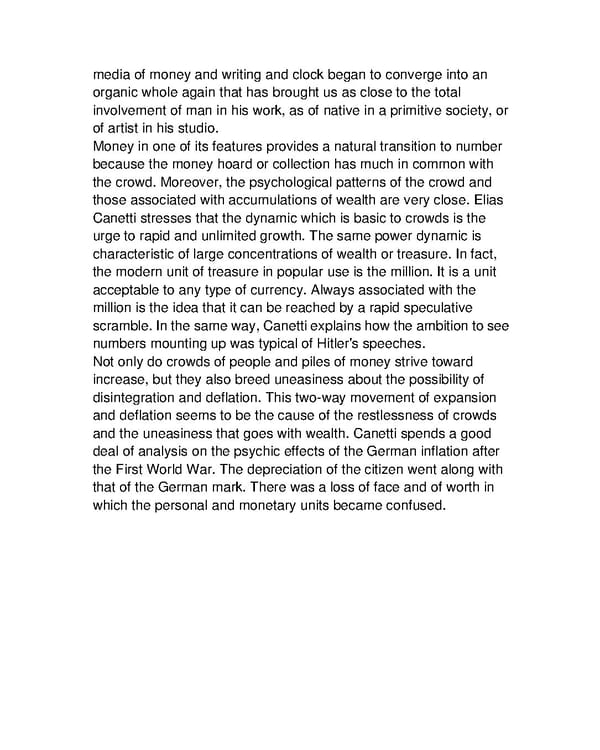media of money and writing and clock began to converge into an organic whole again that has brought us as close to the total involvement of man in his work, as of native in a primitive society, or of artist in his studio. Money in one of its features provides a natural transition to number because the money hoard or collection has much in common with the crowd. Moreover, the psychological patterns of the crowd and those associated with accumulations of wealth are very close. Elias Canetti stresses that the dynamic which is basic to crowds is the urge to rapid and unlimited growth. The same power dynamic is characteristic of large concentrations of wealth or treasure. In fact, the modern unit of treasure in popular use is the million. It is a unit acceptable to any type of currency. Always associated with the million is the idea that it can be reached by a rapid speculative scramble. In the same way, Canetti explains how the ambition to see numbers mounting up was typical of Hitler's speeches. Not only do crowds of people and piles of money strive toward increase, but they also breed uneasiness about the possibility of disintegration and deflation. This two-way movement of expansion and deflation seems to be the cause of the restlessness of crowds and the uneasiness that goes with wealth. Canetti spends a good deal of analysis on the psychic effects of the German inflation after the First World War. The depreciation of the citizen went along with that of the German mark. There was a loss of face and of worth in which the personal and monetary units became confused.
 Understanding Media by Marshall McLuhan Page 160 Page 162
Understanding Media by Marshall McLuhan Page 160 Page 162